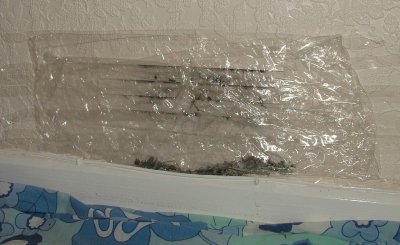
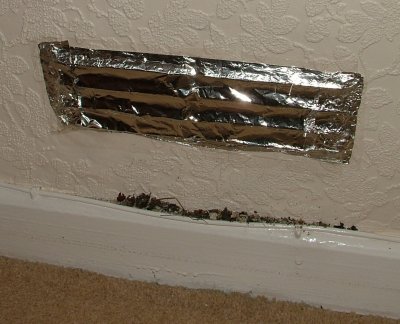
Removing a swarm from the chimney of a former Council house
A buzzing of bees was heard coming from a vent of a disused chimney of the front bedroom in the house during the night of 29/30 July 2009. The author was called in to assist the following day, made a survey an initial survey and carried out the work on 1 July.
Bees were seen trying to get through the narrow slots of the vent that the owner had covered with plastic film. The buzzing was loud enough to disturb her sleep.


The plastic film was replaced with a double layer of foil behind which was a pad of tissue soaked in Fischer's 'Bee Quick', a honey bee repellent. The noise diminished considerably.
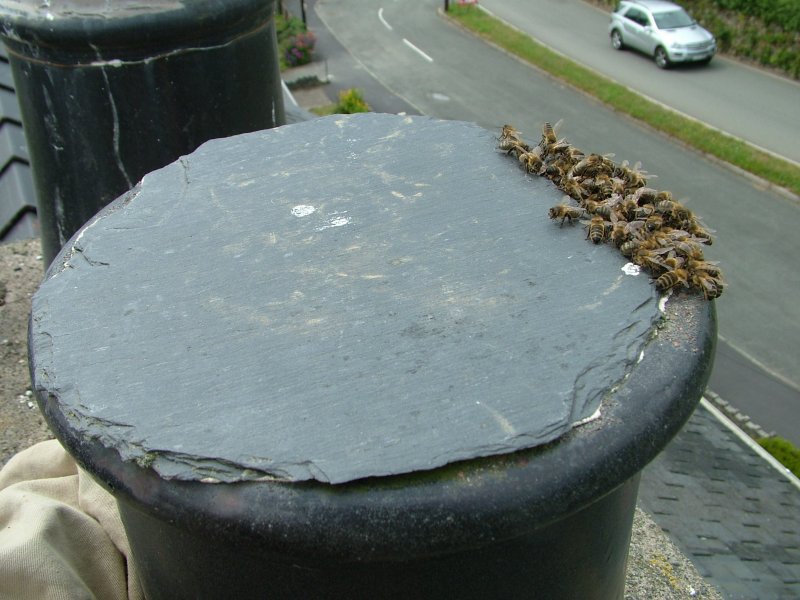
The chimney pot was found to be capped with a slate, on one edge of which was a narrow slit towards the front of the house. The owner had lived there many years and had never previously had bees in any chimney of the house.
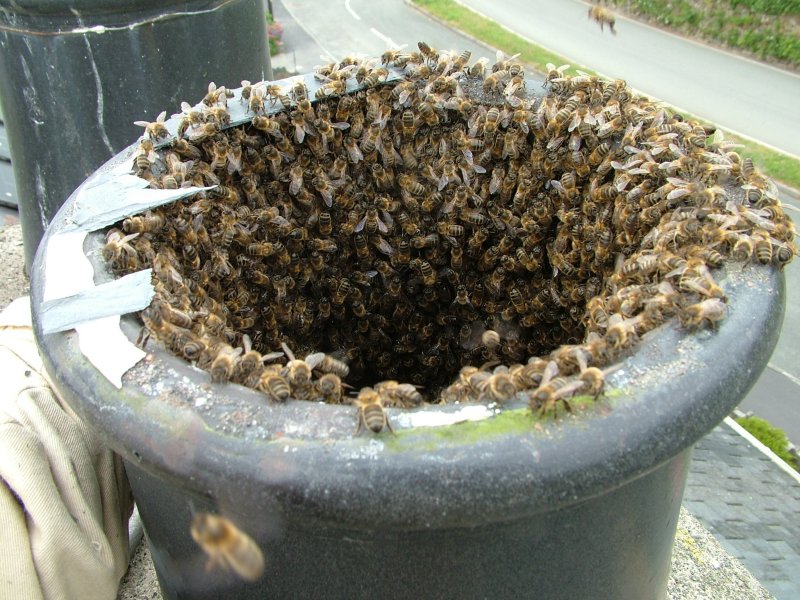
With the owner's permission, the slate was prised off. This revealed the swarm which was clinging not to the slate but to the sides of the pot.
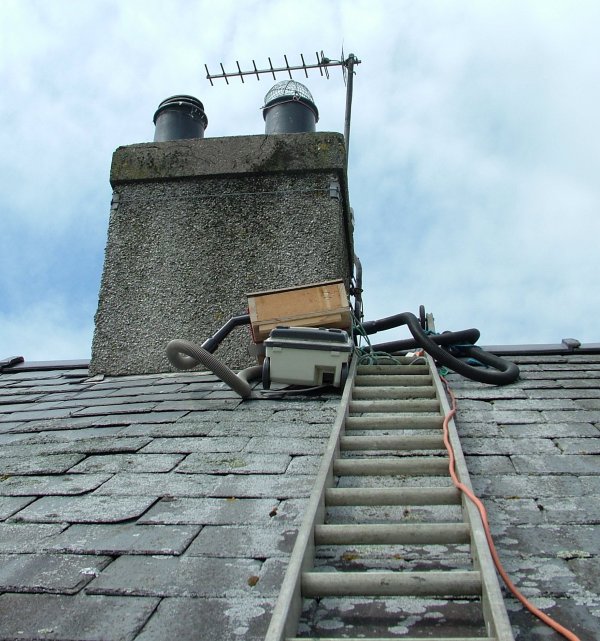
A bee vacuum was set up. This comprises an ordinary domestic vacuum cleaner to provide the suction; a wooden box fitted with closable vents covered with mesh top and bottom and inlet and outlet holes. The outlet to the vacuum has a mesh cage behind it to retain bees whilst minimising the risk of bees blocking the flow. A long inlet tube is fitted and can be quickly unplugged and replaced with a foam polyether bung. As soon as vacuuming is stopped, the sliding covers of the vents are removed to give plenty of ventilation to the swarm.
Notice that the pot of the chimney of the adjoining property is covered with a louvred metal capping. The other chimney pot is capped with a bird guard.
The bees were sucked into the bee vacuum. However, seconds before starting vacuuming some bees took to the air and the rest began to run up inside the pot and take flight too. Perhaps only a third to a half of the swarm was caught in the trap of the vacuum. The rest were airbourne over the roof of the property for about five minutes before they disappeared.
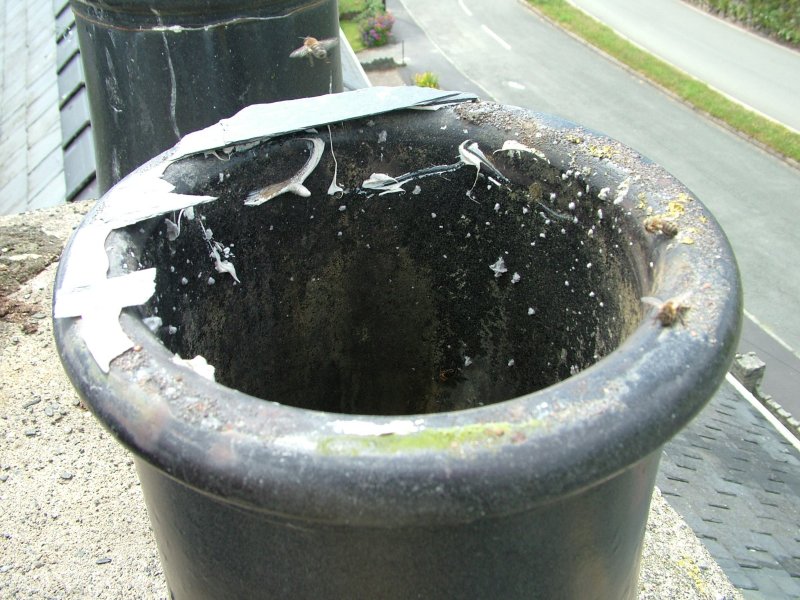
Only a few bees remained after the departure of the swarm and cessation of vacuuming.
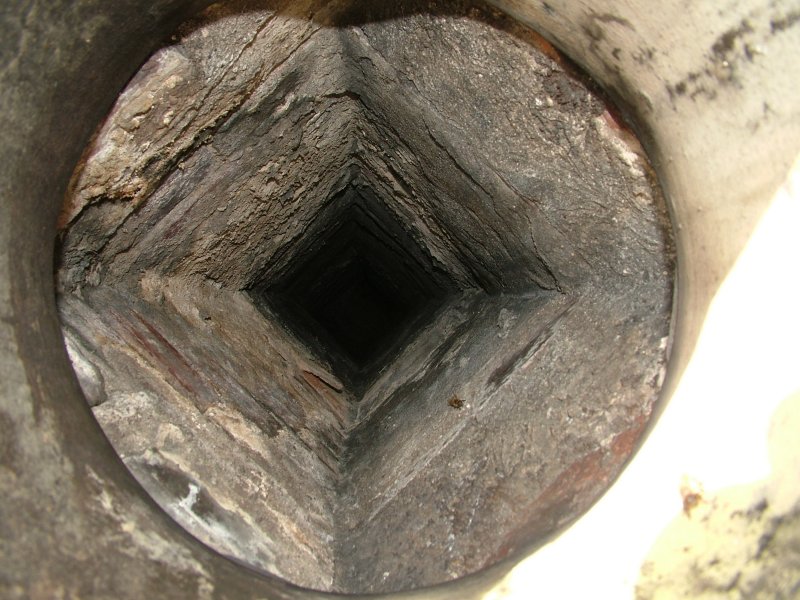
The sound of buzzing was heard coming from deep in the flue. Neither the camera flash nor the author's torch could illuminate the base of the flue. The pot was capped with a plastic bag tied in place and the owner was advised to have a proper chimney pot cap installed before winter, preferably fitted with insect mesh.
It appears that the swarm having occupied the cavity decided it was unsuitable. The likely reason for this is that in the hot weather, with temperatures up to 29 degrees C they found it impossible to stick comb to the slate capping of the pot. Indeed, the slate was probably too hot for the bees to cling to, hence their position round the sides of the pot.
The portion of the swarm that was caught in the vacuum trap was probably queenless, to judge by the moan that continued for an hour or two afterwards, despite their being in a ventilated box in the shade and given occasional sprays of water.
The total time on site was two and a half hours.